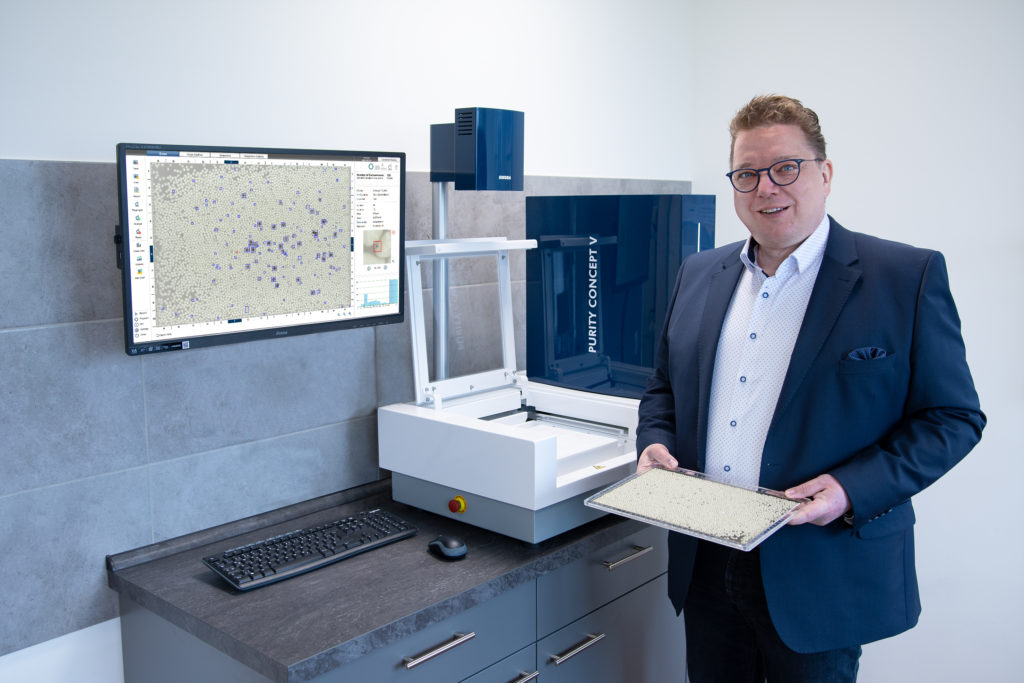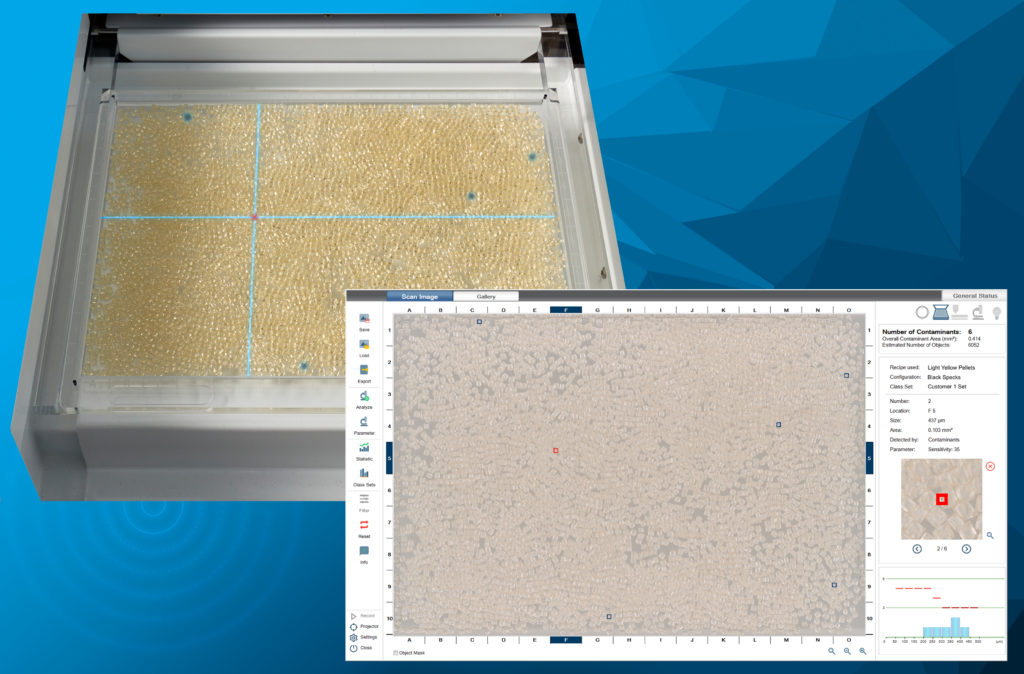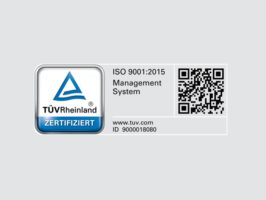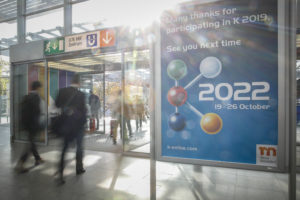We rely on SIKORA’s inspection and analysis device PURITY CONCEPT V
SORTCO GmbH & Co. KG is a specialist for optical and mechanical sorting of shape and color deviations in plastic granulates. Further focal points are dust removal and metal separation of virgin plastics. In March 2021, the company opened a new, state-of-the-art sorting service center in Niederzissen/Rhineland-Palatinate, where both optically demanding technical plastics and standard plastics are cleaned. After the sorting process, the PURITY CONCEPT V, an optical inspection and analysis system from SIKORA, is used for the final sample inspection.
Highest purity of engineering plastics is a decisive feature for the quality of the end products, especially for the use in the automotive industry, aerospace industry, medical technology and information technology. The requirements for the purity of the materials are correspondingly high. Since 2015, SORTCO has been active as a contract sorter and professionally prepares plastic granulate according to customer requirements. “The goal of all sorting orders is high-purity goods,” says Hilger Groß, Head of Sales & QM at SORTCO, and adds, “We have the claim to deliver material to our customers so clean that it is at least equivalent to virgin material. Therefore, our sorting includes a 100% inspection of all individual granules.”

Fig. 1: Hilger Groß, Head of Sales and QM at SORTCO, presents the PURITY CONCEPT V from SIKORA for the inspection and analysis of plastic granules.
The sorting is carried out by means of different inspection methods. For the optical inline inspection and automatic sorting two PURITY SCANNER ADVANCED from SIKORA are used in the SORTCO plants. Following the sorting, the random inspection of the granules for final quality control is performed with SIKORA’s laboratory testing system PURITY CONCEPT V (Fig. 1). “We examine with the system a granulate quantity defined with the customer and agree on the testing frequency. For 1,000 kg of granules, for example, between 1 and 3 samples of approximately 100 g each are tested.” In the process, the test material is distributed on the sample carrier, automatically guided through the inspection area and inspected by a camera within a few seconds. A projector marks contaminated material in color directly on the sample carrier. In parallel, the contaminated material is displayed and marked on the monitor, indicating the size of the contamination. Individual contaminated pellets can be selected and enlarged. On the sample carrier, these are simultaneously visualized optically by crosshairs (Fig. 2).

Figure 2: Detected contaminations are highlighted in color on the sample carrier as well as in the software, for easy removal.
Unsurpassed image quality in analysis
There are a few inspection methods for random sample inspection of plastic pellets on the market. However, SIKORA’s inspection and analysis system has proven to be the leader in this field due to its functionality, reliability and speed, according to SORTCO. “Only with SIKORA the test material lies on a sample carrier without movement, so that the analysis image has an unsurpassed image quality. With alternative systems, the test material is in motion, which makes a clear evaluation difficult due to blurred images”, explains Groß and continues: “With the PURITY CONCEPT V, we are able to make reliable statements about the product quality very quickly, easily and above all reproducibly. A clear competitive advantage here is the projector. All detected contaminations are precisely marked by a light spot or colored crosshairs and can be easily removed from the sample carrier. These can be further examined and analyzed to draw a conclusion about the cause of the defect.” Clear assignment of contamination and follow-up checks are possible at any time and do not have to be carried out manually by the operator. Groß also cites the clearly structured test report, as a quality inspection certificate for the customer that complies with the requirements of ISO 9001:2015, and the testing speed of only about 15 seconds per sample examination as clear advantages of the system. “Including all handling, we have a representative test result within 2 minutes. That is unbeatable on the market.”
There are hardly any contaminations that the system does not detect. The PURITY CONCEPT V is far superior to the human eye. Humans initially recognize only large contrasts; smaller and lighter defects are overlooked. The system immediately identifies all color deviations from a size of 50 µm. These are often burns of the polymer of varying intensity, the so-called black specks, specks, burns or also brown or yellow specks. The size and number of all colored defects and contaminations in the granules are recorded. An unlimited number of single tests or alternatively serial tests can be performed. Up to 100 individual tests can be combined into one overall result. The test results are documented and automatically made available to the customer together with the sorting results and the quantity balance after completion of the order. Usually, test samples are stored for 12 months. However, the test data is also available beyond this period at SORTCO so that customers can refer to it, for example, in the event of a complaint from the end user.
Inspection and sorting systems will gain in importance
Innovative and reliable cleanliness inspection systems are essential for sorting at SORTCO. Inspection and sorting systems will continue to gain importance in the industry in the future. According to Groß, this is due to the increasing visual demands placed on products, but also to the high costs associated with machine downtime and repairs to hot runner systems and injection molds. At the same time, sorting reduces injection molding waste, which, in addition to the economic benefits, also helps protect the environment. “With the opening of our sorting service center in Niederzissen, we will install more inspection and sorting machines,” reveals Groß. The creation of new sorting capacities is only one aspect here. In the future, the main focus will be to reliably detect defects from a minimum edge length of 50 µm and to separate them in the best possible way. “With SIKORA we have found a partner whose systems meet these requirements not only for the random inspection, but also for the sorting.”
Please contact us: team@sortco.de

